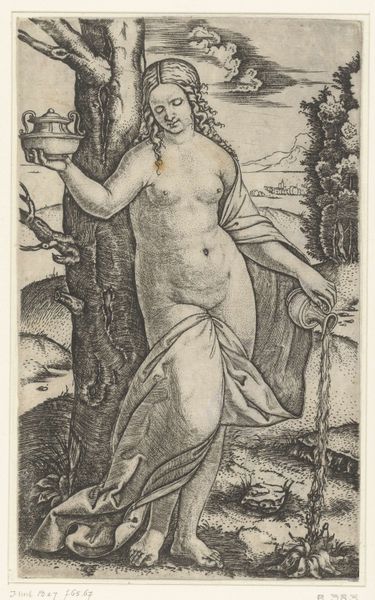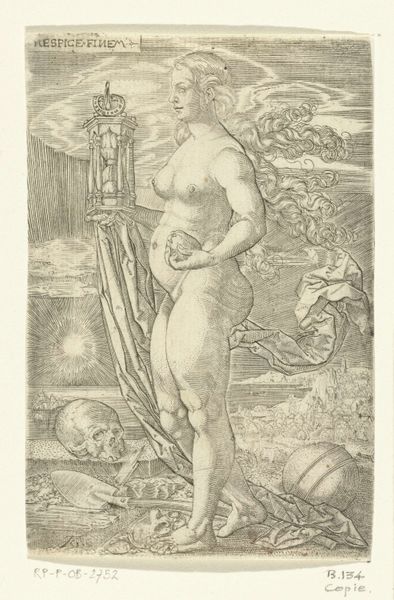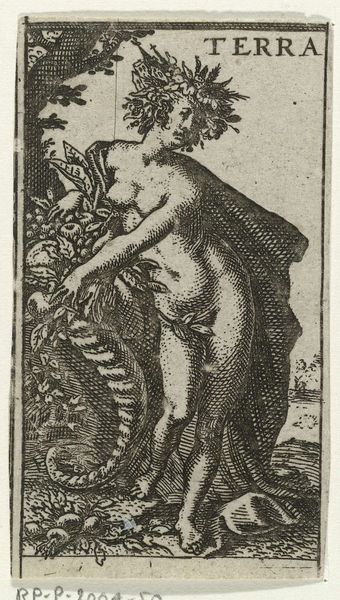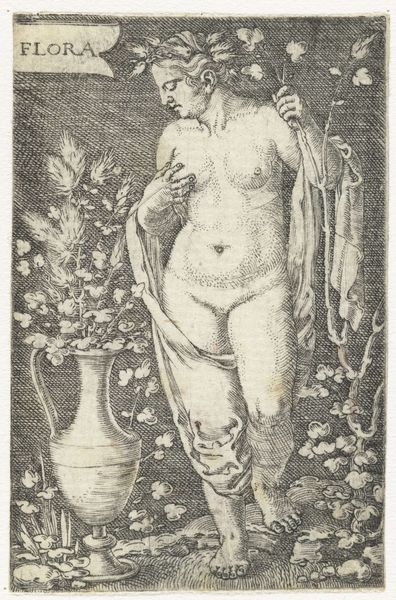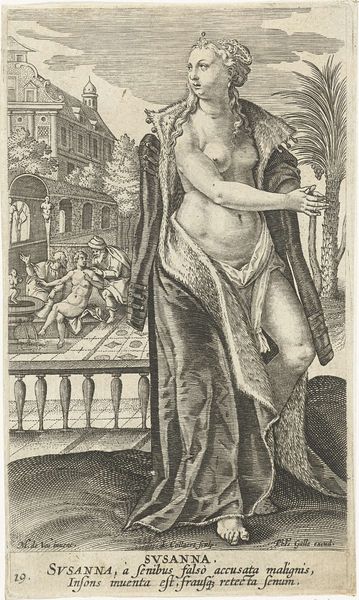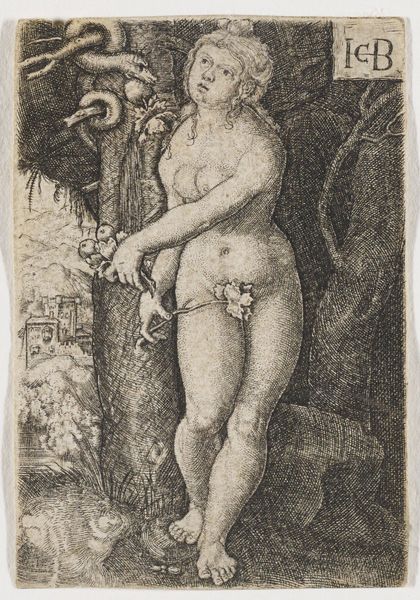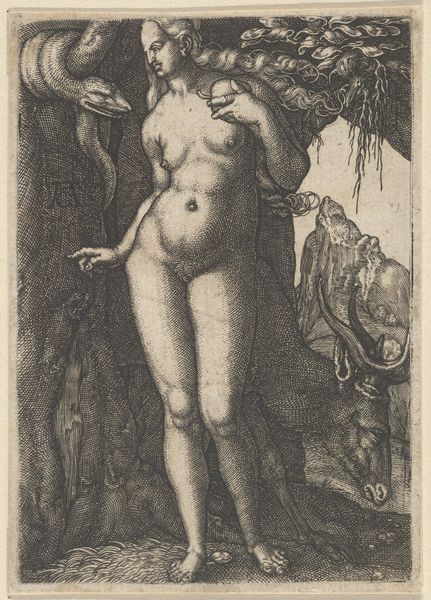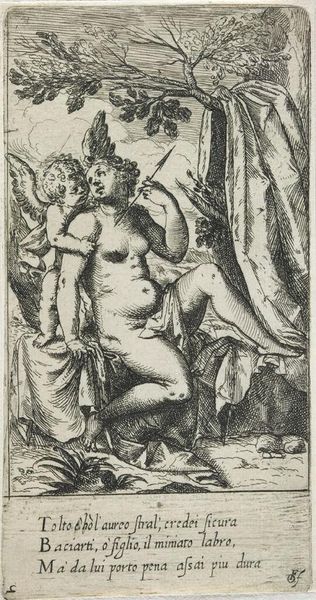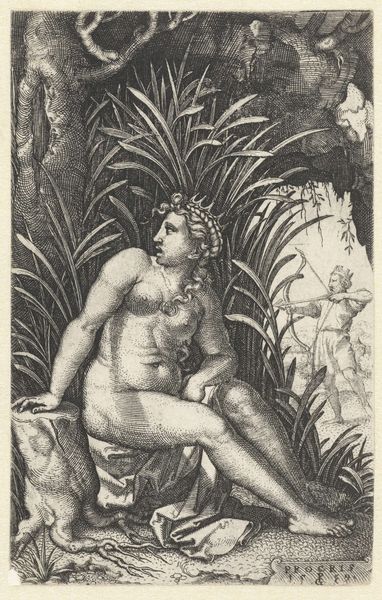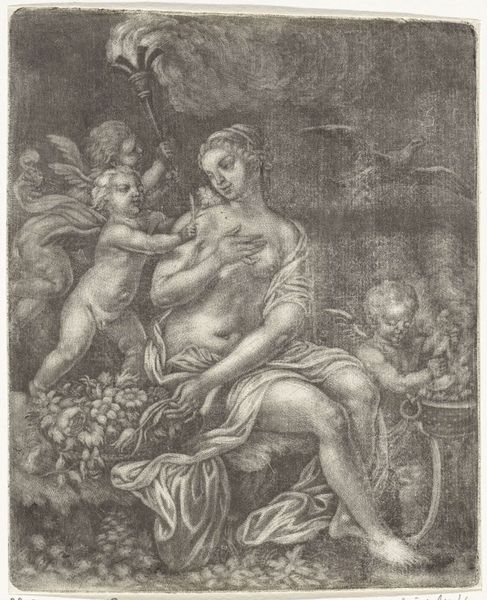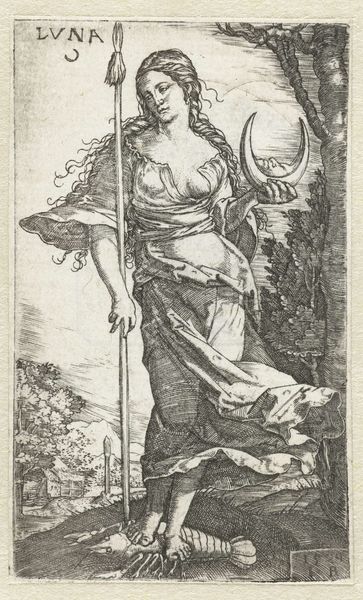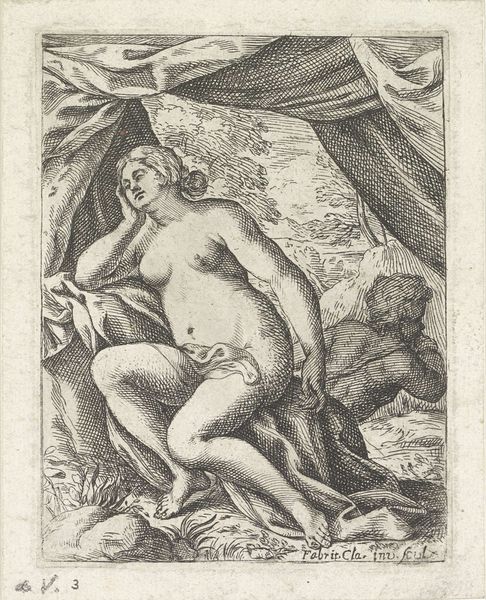
print, engraving
#
allegory
# print
#
landscape
#
figuration
#
11_renaissance
#
italian-renaissance
#
nude
#
engraving
Dimensions: height 191 mm, width 118 mm
Copyright: Rijks Museum: Open Domain
Curator: This print is titled "Half-Naked Woman Watering a Plant" by Marcantonio Raimondi, likely created sometime between 1510 and 1527. It’s an engraving currently held here at the Rijksmuseum. Editor: Immediately striking—the texture achieved through engraving creates this luminous effect. The woman herself, her curves, seems almost porcelain against the rough bark of the tree. Curator: Yes, her nudity is quite intentional, echoing the classical ideal of the Venus figure, closely associated with ideas of beauty, fertility, and of course, the nurturing essence of nature itself. Water, essential to life, is poured to nourish a plant. Editor: I’m interested in the "how" of it. The process of engraving is laborious—carving lines into a metal plate, inking it, and pressing it. This reproductive method democratized access to classical imagery, shifting both viewership and the artistic labor market itself. How many hands touched the production of this image? Curator: Indeed, the circulation is key. The image likely draws inspiration from classical statuary and myth, adapted through a Renaissance lens. The watering, symbolically, suggests the cultivation of virtue or perhaps the flourishing of knowledge. It carries forward a certain thread, doesn't it? Editor: What intrigues me is how that ideal is materialized through the technical expertise involved. This isn't just a drawing; it’s the outcome of very specific artisanal labor and a calculated use of materials to invoke the past. Look closely and see the quality, depth and character in the varying tones. Curator: The landscape, though simplified, serves to further amplify the theme, subtly indicating the generative power inherent in the natural world. Everything intertwines! Editor: So, even a seemingly straightforward image of a classical female form becomes layered with meaning through the tangible means of its production. It's the materiality that grounds the symbol. Curator: Yes, from classical echoes to artisanal mastery. A fruitful confluence, would you agree? Editor: Absolutely. Something about recognizing those human processes – and the labor woven into that print – really changes how I see it now.
Comments
No comments
Be the first to comment and join the conversation on the ultimate creative platform.
